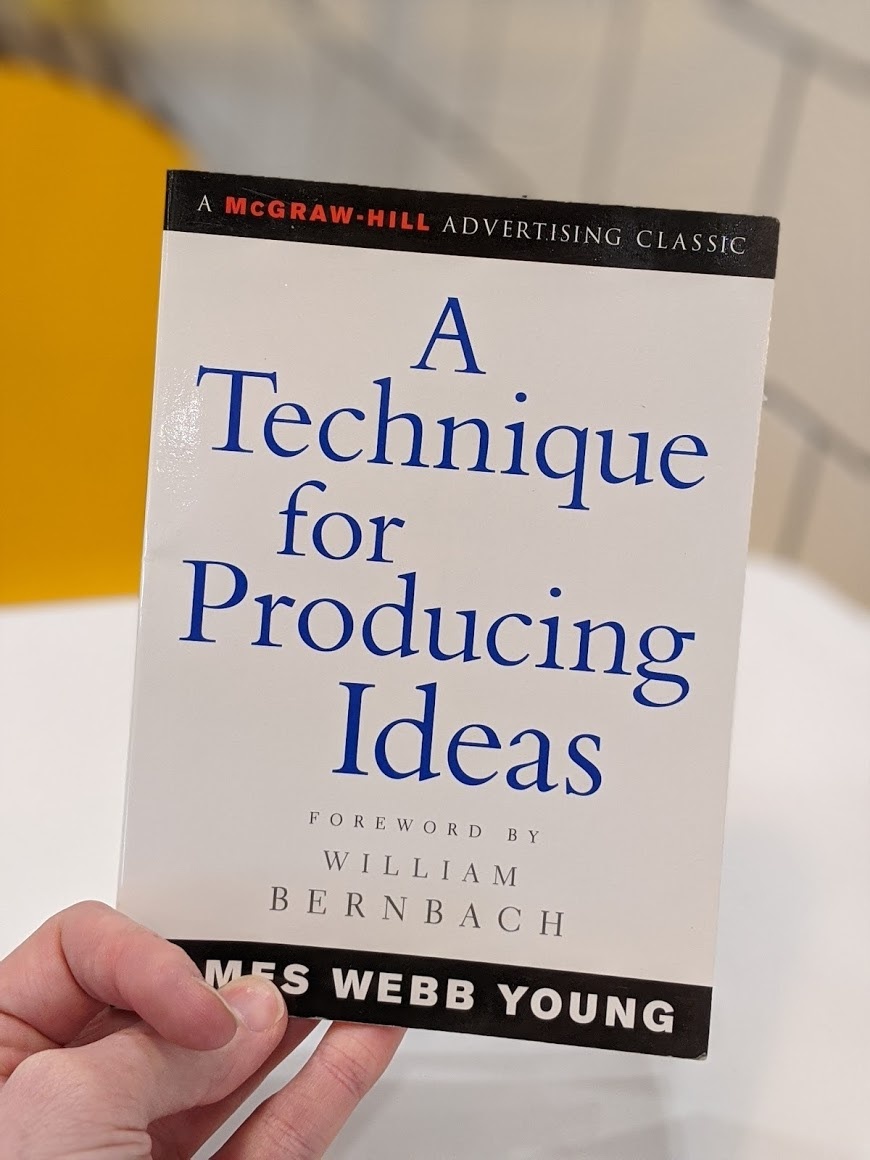Guest Post from Michael Essek: A Technique for Producing Ideas
Here at TeePublic, we've been fans of Michael Essek's Print-on-Demand tips for a while, so we're pumped to be running another entry in conjunction with him today. (Be sure to check out his previous blog entries on TeePublic’s blog here!) Like what you see? There's more where that came from on his website, so do check it out! With no further ado...take it away, Michael!
---
A Technique for Producing Ideas
For a while now I’ve been digging deep into the subject of idea generation.
In my case, that means generating ideas for t-shirt designs - but the topic is much bigger and wider than that...because everyone involved in a creative field needs ideas!
Anyway, in my quest to read everything I can about coming up with ideas, I stumbled across this book:
'A Technique For Producing Ideas' by James Webb Young
To say it’s a little book would be overstating it - it’s not even 50 pages long and it fits in my coat pocket.
It took me less than half an hour to read it.
Nevertheless, it’s a nice little read and outlines a very simple strategy for ‘priming’ your brain to generate ideas.
James Webb Young was an advertising man - so he’s mainly talking in the context of producing ideas for advertisements in magazines (yes, it’s a little old).
But his idea generation technique itself is universal - and with my apologies to James - I will attempt to summarise it here:
- Gather lots of specific information about your subject.
- Keep a general ‘scrapbook’ or collection of interesting ideas, examples, articles, clippings. (This is to be an on-going process, not directly related to your subject).
- Think over the specific problem in your mind (i.e. what you are trying to produce ideas for)
- Let it stew.
- Bingo - ideas will come.
I think my approach to generating t-shirt ideas is broadly similar:
- Gather lots of info about your subject (associated words, images, knowledge of your topic)
- Look over your collection of frameworks, formulas and examples.
- Follow steps to combine your subject with your frameworks.
- Bingo - you’ve got some ideas.
This is why it’s a great idea to keep a ‘scrapbook’ of ideas and examples - whether that’s specific frameworks and formulas to use or just a folder of t-shirt designs you like for some reason.
The more examples you have in your collection, the more your subconscious has to work with, and so the more ideas you are likely to generate.
One final point - this specific section stood out to me as I read the book the first time:
Here the writer is speaking about how he started a mail-order business selling neckties after he moved to New Mexico.
His point is that both the idea for the product and the specific marketing ideas he used to sell them all came from his personal knowledge and interest in the Southwest and Spanish-American culture.
He was interested in this topic ‘for its own sake’.
In other words, he was interested in this subject first - and later came the ideas for products based around that interest.
He did not pick the subject in order to build a business around it - he was genuinely, personally interested in the topic, so what followed was organic - arising naturally from his enthusiasm and passion.
It wasn’t forced.
This is why the best advice for beginners getting into the T-Shirt game is to design around subjects you know.
If you do this, you'll have a lot more specific information from which to work, because of your deep knowledge of the subject.
Furthermore - genuine interest in a subject gives you empathy with your potential customers - making decisions about style, layout, colours, wording, titles, descriptions, tags and marketing that much easier.
If you don't have detailed knowledge of your subject, you're going to find it tough sledding - even with a lot of proven frameworks and helpful strategies to fall back on.
Remember - a tool is only as good as its master.
A tool's job is to help his master build a better product for the customer.
But if you don't know what a ‘better product’ for your customer looks like, you won't know how to use the tool to produce that product.
So wherever possible, prioritise knowledge of your subject and your audience...and it will make the 'ideas' part (and everything that follows after) a whole lot easier.
Until next time,
Michael Essek
Website
Twitter
Facebook
---
Thanks for reading and of course, a big thank you to Michael Essek for sharing his expertise with all of us once again! Michael recently published a new guide to selling on Teepublic, so be sure to check that out!
And be sure to check out Michael’s previous blog entry for TeePublic on 3 Simple Rules for T-Shirt Success.
We hope this blog entry has inspired you to create more. Ready to go?
UPLOAD NOW










